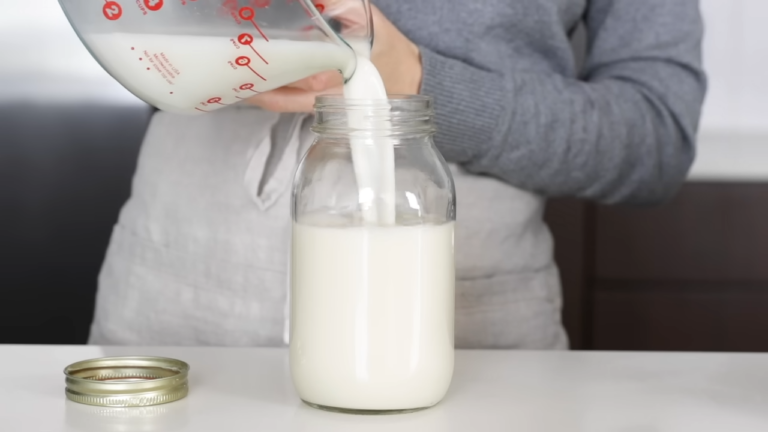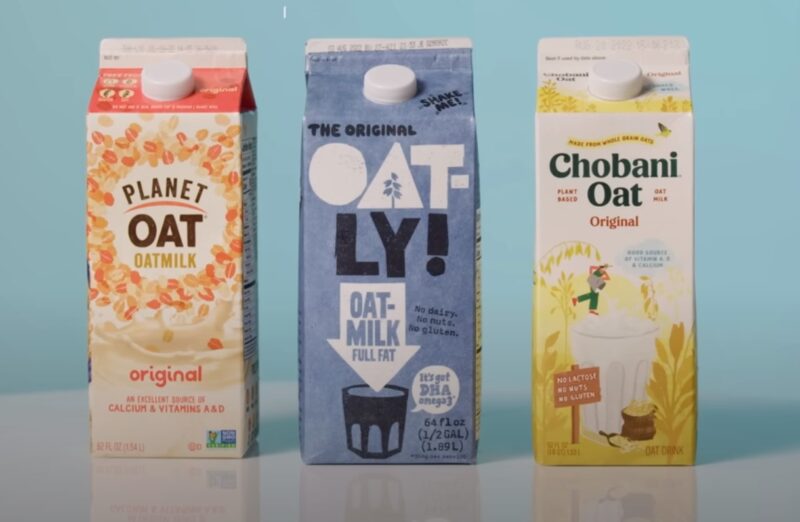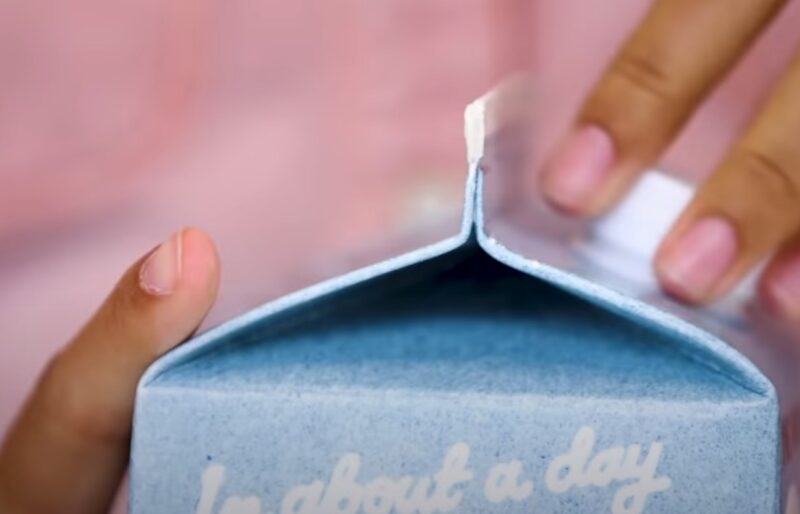Oat milk, a dairy-free milk alternative, has enjoyed a surge in popularity among those seeking vegan or lactose-free options. With its creamy texture and mild flavor profile, this plant-based milk fits seamlessly into coffee, cereal, and smoothies.
However, understanding the proper storage guidelines for oat milk is crucial. Like all perishable goods, oat milk has a finite shelf life that can be significantly reduced if it is not stored properly. Factors such as whether the oat milk is homemade or store-bought, and whether it is shelf-stable or refrigerated, influence how long it can sit out safely.
Leaving oat milk at room temperature for an extended period can lead to spoilage due to bacterial growth which thrives between 40°F and 140°F. Recognizing the signs of spoilage is key to ensuring the oat milk consumed is safe.
Proper storage after opening — typically in a refrigerator — is necessary to maintain freshness, and different brands may offer varying expiration dates. Consultation of the product label for specific guidelines is recommended, particularly with homemade versions that may lack preservatives and have a shorter safety window.
Understanding Oat Milk
Oat milk is a dairy-free alternative to traditional cow’s milk, offering a unique nutritional profile and a taste that appeals to a wide range of consumers. It can be found in various forms, each catering to different dietary requirements and flavor preferences.
Types of Oat Milk
Oat milk comes in several forms, including sweetened, unsweetened, and flavored varieties such as vanilla. Whether the oat milk is shelf-stable or refrigerated will often depend on the processing method used. Shelf-stable oat milk can be stored at room temperature until opened, while refrigerated types should be kept cold at all times.
- Sweetened: Often contains added sugars for enhanced flavor.
- Unsweetened: No additional sugars, relies on the natural sweetness of oats.
- Flavored: Includes additional ingredients like vanilla for a distinct taste.
Nutritional Profile
The nutritional value of oat milk is a key aspect of its appeal, as it provides certain nutrients that are beneficial to one’s health. It is an excellent source of fiber and protein and often enriched with vitamins and minerals such as calcium, vitamin D, and vitamin A, mirroring the fortified attributes of cow’s milk.
- Fiber: Essential for digestive health, ranging from 1-4 grams per serving.
- Protein: Around 2-4 grams per serving, although less than cow’s milk.
- Vitamins & Minerals: Frequently fortified to provide additional nutritional value.
Taste and Texture
Oat milk is revered for its creamy texture and mild, slightly sweet flavor. It differs from cow’s milk in that it has a subtle oat taste, which makes it a preferred ingredient in coffee, smoothies, and cereals.
- Consistency: Generally creamier than other milk alternatives.
- Texture: Smooth, without the graininess that some other plant-based milks have.
- Flavor: More pronounced in sweetness and oat character, especially in sweetened and flavored varieties.
By understanding these characteristics of oat milk, consumers can make informed decisions based on their dietary needs and flavor preferences.
Proper Storage of Oat Milk
Ensuring that oat milk maintains its quality relies heavily on adhering to proper storage methods, whether the product is refrigerated or shelf-stable before opening.
Refrigeration Guidelines
Refrigerated oat milk should always be stored in the fridge, even before opening, to preserve its freshness and safety for consumption. After opening, it’s critical to keep the oat milk refrigerated continuously and consume it within 7 to 10 days to prevent spoilage and maintain its taste and nutritional value.
Shelf Storage Tips
Shelf-stable oat milk benefits from aseptic packaging, allowing it to be kept in a pantry or another cool, dry place without refrigeration prior to use. The optimal conditions involve a stable temperature away from direct sources of heat or light. Once opened, these shelf-stable varieties should be treated as refrigerated oat milk, requiring refrigeration and prompt consumption.
Opened Container Handling
Once an opened container of oat milk has been breached, proper storage becomes crucial. Independent of whether the oat milk was originally refrigerated or shelf-stable, opened containers need to go into the fridge. They must also adhere to safe consumption times, typically not exceeding two hours at room temperature, to mitigate the risk of bacterial growth.
Identifying Spoilage
When assessing whether oat milk has spoiled, three main indicators provide reliable information: appearance, smell, and taste. A change in any of these factors typically signifies that the milk should no longer be consumed.
Visual and Textural Cues
Spoilage in oat milk can often be detected visually. The liquid should be smooth with a consistent color. If the milk has expired, signs such as color changes, the presence of lumps, or the milk beginning to separate into layers can indicate spoilage. Curdling is another visual indication that oat milk has gone bad and should be discarded.
Odor Recognition
A rancid smell is a grim telltale of spoiled oat milk. Fresh oat milk has a mild, slightly sweet odor. Any deviation from this, particularly a sour or off smell, can imply that the oat milk has expired. Trust one’s sense of smell as a first line of defense against ingesting spoiled food.
Taste Assessment
Although it’s preferable not to taste oat milk if it shows other signs of spoilage, an altered taste can confirm that the milk is no longer safe. Spoiled oat milk can have a sharp, sour taste, significantly contrasting its typically neutral or slightly sweet taste when fresh. Avoid tasting if the milk has visible signs of spoilage or an off smell. Trusting the taste buds is essential, but only when other indicators suggest the milk is fine.
Safety Concerns with Oat Milk
When it comes to oat milk, ensuring safety is crucial. The primary concerns are related to the risk of food poisoning due to bacterial growth — specifically when oat milk is left out at room temperature.
Food Poisoning Risks
Food poisoning can occur if oat milk is improperly stored and consumed. The USDA guidelines are clear: oat milk left out at temperatures between 40 °F and 140 °F for over two hours can foster an environment where harmful bacteria like Salmonella and E. coli thrive. These pathogenic bacteria can lead to serious health issues if ingested.
Understanding Bacterial Growth
Microbial growth in oat milk doesn’t just pose a risk to health; it can also spoil the product. Spoilage bacteria can proliferate in oat milk, leading to sour tastes, unpleasant odors, and changes in texture. These changes indicate the milk is no longer safe for consumption. Temperature control is therefore essential to prevent the rapid multiplication of bacteria in oat milk once the container is opened.
Optimizing Oat Milk Usage
When it comes to optimizing the use of oat milk, understanding its interaction with coffee, its role in cooking and baking, and the methods to create froth can enhance your culinary experience.
Incorporating Oat Milk in Coffee
Oat milk, with its creamy texture and neutral flavor, is an excellent dairy alternative for coffee. It blends well, providing a rich, velvety consistency, and is capable of holding a sweetener effectively, appealing to those who like their coffee with a hint of sweetness. When using homemade oat milk, ensure it is fresh to avoid any off flavors in your coffee. Additionally, oat milk is fortified with B vitamins and vitamin D, adding nutritional value.
Oat Milk in Cooking and Baking
In cooking and baking, oat milk serves as a versatile ingredient. It offers a subtle flavor and creamy texture that doesn’t overpower dishes. For those looking to boost their intake of protein and soluble fiber, using oat milk can be a beneficial option. Always keep food safety in mind; when incorporating it into recipes, it should never sit out for longer than two hours to reduce foodborne illness risks.
Creating Froth from Oat Milk
Creating froth from oat milk involves two main methods: using a frother or shaking it vigorously in a sealed jar. To achieve the best froth:
- Chill the oat milk as colder milk froths better.
- Use a frother for a quick and easy method.
- Alternatively, shake oat milk in a sealed jar before transferring it to a microwavable container and heating briefly.
The resulting froth adds a delightful textural element to beverages and can be comparable to that made with dairy milk, enriching the overall experience.
Assessing Oat Milk Shelf-Life
When it comes to oat milk, understanding its shelf life is crucial to ensure both its freshness and safety for consumption. Factors such as expiration dates and whether the container is opened or sealed affect how long the oat milk remains suitable for drinking.
Expiration Date Relevance
The expiration date on an oat milk carton is a manufacturer’s guarantee of peak quality up to that point. Unopened oat milk can last beyond this date if stored correctly, typically in a cool, dry place away from direct sunlight.
While an unopened shelf-stable carton can last up to a year, this isn’t a hard and fast rule. Factors such as storage conditions and brand practices can alter this timeline. Once this date has passed, one should inspect the oat milk for signs of spoilage before use.
Opened vs Sealed Longevity
Once sealed oat milk is opened, it transitions from a non-perishable to a perishable commodity. An opened container of oat milk should not be left out for more than two hours at room temperature due to rapid bacterial growth in the 40°F to 140°F range. T
o maintain freshness, opened oat milk should be refrigerated promptly and is best consumed within 7 to 10 days. Proper refrigeration is key to preserving its quality, and signs such as off-smell, discoloration, or a change in texture can indicate spoilage.
Special Considerations for Homemade Oat Milk
When dealing with homemade oat milk, one must be diligent about storing practices to maintain its quality and safety. Unlike commercially processed oat milk, which often contains preservatives and stabilizers, homemade oat milk can be more susceptible to spoilage due to its natural composition and the absence of these additives.
- Temperature Control: Homemade oat milk should be kept at a consistent, cool temperature. It is generally recommended that it not sit out at room temperature for more than two hours, as bacteria can grow rapidly in the 40 °F – 140 °F range.
- Refrigeration: Homemade oat milk needs to be refrigerated in an airtight container. The cooler environment slows bacterial growth, extending the milk’s use-by date. On average, one can expect homemade oat milk to remain fresh for 3-5 days in the refrigerator.
- Freezing: For longer storage, freezing homemade oat milk is an option. It can be stored in ice cube trays or freezer-safe containers, prolonging its shelf life for up to three months. Defrost only the needed amount to avoid wastage.
- Clean Environment: Ensuring that the preparation area and storage containers are clean is paramount in preventing contamination and extending the life of homemade oat milk.
Adhering to these guidelines is crucial for anyone preparing oat milk at home. It’s the individual’s responsibility to be aware of the potential for bacterial growth and take the appropriate measures to ensure that their homemade oat milk remains a healthy and enjoyable dairy alternative.
Culinary Applications
Oat milk is a versatile ingredient in the kitchen, lending its creamy texture to various dishes while serving as a dairy-free option for those with dietary restrictions or allergies. Its nutritional value also appeals to health-conscious consumers.
Oat Milk in Dairy-Free Diets
Oat milk is a staple in dairy-free diets due to its nutritional profile, which typically includes fiber, vitamins, and minerals. Those who are lactose intolerant or choose to eliminate cow’s milk from their diets often opt for oat milk as a non-dairy alternative. It’s used in a wide range of culinary applications, from sweet to savory dishes, and can often be substituted in a 1:1 ratio for cow’s milk in recipes.
- Cooking: Use oat milk for making dairy-free sauces, soups, and gravies.
- Baking: Incorporate oat milk into cakes, cookies, and bread for added moistness.
- Beverages: A perfect addition to dairy-free smoothies, coffee, and tea.
Allergy-Friendly Oat Milk Alternatives
For individuals with allergies to nuts and soy, oat milk is an excellent alternative. It’s naturally free of nuts, soy, and lactose, reducing the risk of allergic reactions for those with such food sensitivities.
- Breakfast: Oat milk can be poured over cereal or blended into oatmeal.
- Desserts: Create allergy-friendly puddings or ice cream with oat milk as the base.
- Cooking: It’s safe for use in entrees that require a creamy consistency without the worry of triggering common allergies.
How to Handle Unrefrigerated Oat Milk
When dealing with oat milk that has been left out, understanding the risks of room temperature exposure is crucial. According to the USDA guidelines for food safety, perishable items, including oat milk, should not be left out of refrigeration for more than two hours. This is because beyond this duration, the milk is susceptible to foodborne illnesses due to bacterial growth.
Shelf-stable versus refrigerated oat milk:
- Shelf-stable oat milk can be stored at room temperature until opened, thanks to specific processing and packaging designed to inhibit bacterial growth.
- Refrigerated oat milk, once opened, must adhere to strict storage instructions to maintain quality and safety.
Proper storage practices after opening involve:
- Returning oat milk to the refrigerator promptly.
- Keeping it at a temperature consistently below 40°F, which is the standard safety threshold.
If oat milk is inadvertently left outside, here are the actions one should take:
- Assess the time and temperature exposure.
- If less than two hours, promptly refrigerate.
- If more than two hours or in high heat, dispose of the product.
- Inspect the packaging.
- Any signs of bulging or damage may indicate spoilage.
- Be mindful of scent and appearance.
- Though not foolproof indicators, off odors or discoloration suggest contamination.
In summary, maintaining optimal temperatures and hygiene will greatly reduce the risk of spoilage and ensure the oat milk remains a safe, enjoyable non-dairy alternative.
Frequently Asked Questions
When considering the consumption and storage of oat milk, one must be aware of how long it can safely sit out, indications of spoilage, differences in shelf life between types of oat milk, and appropriate handling of expired products.
Is it safe to drink oat milk that was left out overnight?
Oat milk that has been left out at room temperature for more than two hours may become a breeding ground for bacteria, making it unsafe to consume, especially if it has sat out overnight.
What are the signs of spoiled oat milk?
Spoiled oat milk may exhibit signs including an off smell, a sour taste, changes in texture such as clumping, and discoloration.
Does shelf-stable oat milk last longer than refrigerated varieties once opened?
Once opened, both shelf-stable and refrigerated oat milks should be consumed within 7-10 days, although the shelf-stable variety has a longer unopened shelf life.
What should I do with oat milk that’s past its expiration date?
Oat milk past its expiration date should not be consumed. It should be disposed of to avoid potential foodborne illness.
How to store oat milk properly after opening to maximize its shelf life?
After opening, oat milk should be stored in the refrigerator and tightly sealed to maximize shelf life and maintain quality.
Can spoiled oat milk cause illness if consumed?
Yes, consuming spoiled oat milk may cause symptoms such as stomach upset due to the presence of harmful bacteria.
Related Posts:
- Most Dangerous States in the US (2024): A Safety Overview
- Can I Get a Pedicure with a Broken Toenail?…
- OpenAI’s Latest Voice Re-Creation Tool Can Clone…
- How To Unpair Apple Watch: Key Insights and Pro Tips
- Pros and Cons of Popular Online Payment Solutions &…
- Your Complete Metal Frame Sofa Bed Buying Guide: 10…
























